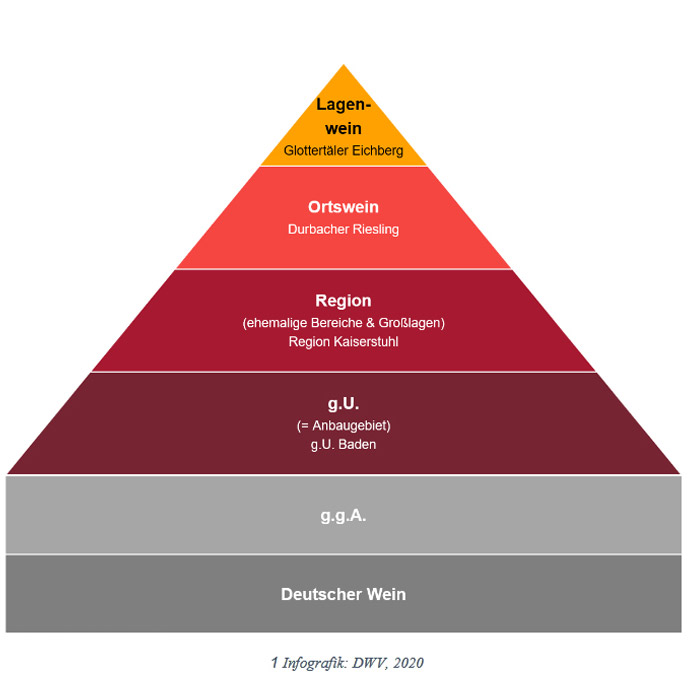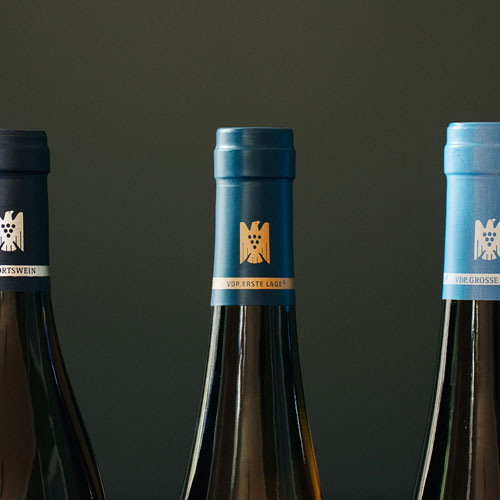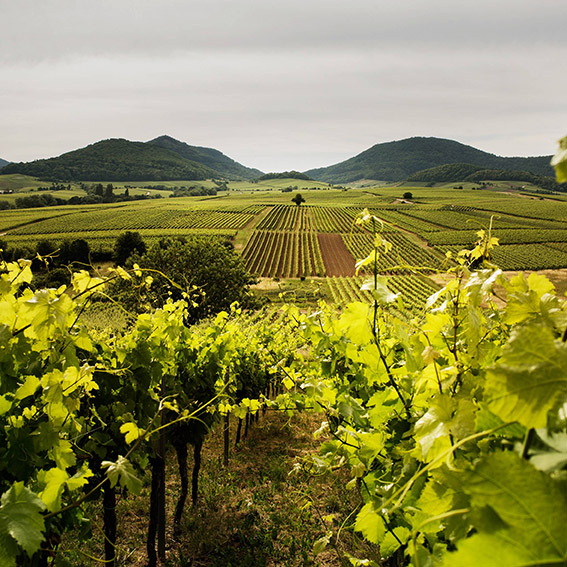In order to strengthen German winegrowers in international trade, the German legislator has adapted the labelling rules to the Romanesque model of origin after years of discussion in the German Winegrowers' Association. The newly regulated conditions for the use of indications of origin are now uniformly anchored from the 2026 harvest year and linked to the quality promise "the smaller the geographical indication, the higher the quality".
The new law thus adapts German wine law, long behind schedule, to the requirements already in force in the EU since 2012. The basis of the quality terms, which are no longer entirely new, are initially two EU categories, the lowest of which is defined as "protected geographical indication" (PGI). It corresponds to the previous "Landwein", the indication of other origins is not permitted here. Wines in the second category with "protected designation of origin" (PDO) correspond to the previous quality or predicate wines.
 ©DWI - New Classification
©DWI - New ClassificationThe outdated German Prädikat wine system will be retained in part. Thus, fruity and noble sweet wines may continue to be labelled with predicates such as Spätlese, Auslese or Beerenauslese. Initially, the responsible persons of the associations involved had even pushed through an opening clause in the wine ordinance, which would have allowed "Kabinett trocken" and "Spätlese trocken" to find their way back onto the label of single-vineyard wines. However, it was deleted again during the consultations. "It is to be rejected that the requirements of the origin profiling are mixed with those of the predicate system. They lead to a complication of the single vineyard profiling, which will hardly be explainable to the consumer," reads the justification in the Bundesrat resolution of March.
For PDO wines, the law now defines a four-tier designation level. It begins with the regional wine. It is labelled with the name of the growing region from which it comes. On the second level are the wines of a region. This category corresponds to the previous area and Großlagen wines. The use of these names was not abolished despite heated discussions because of the danger of confusion with very similar sounding single vineyards. The compromise was: "Region".
This term must be written in the future clearly and, above all, in the same font size, font type and colour immediately preceding the large vineyard or area name:
Example: Region Bernkastel / Region Kurfürstlay.
The additional use of the name of a municipality or a district in addition to a region should not be permitted for the time being - this should be reserved for single vineyards. But here there is an exception: The use is possible if at least 85 percent of the grapes originate from the indicated municipality. The municipality name is now to precede or follow the indication region as well as the large vineyard name:
Example: Region Kurfürstlay Brauneberg / Brauneberg Region Kurfürstlay.
For local wines, on the other hand, the rules are quite uncomplicated: When naming a municipality or a district from which 85 percent of the grapes originate, only the minimum alcohol content is defined. It must at least reach the former predicate "Kabinett". The wine may be marketed as early as 15 December of the year of harvest.
Example: Brauneberger Riesling
The question of location: What is allowed, what is forbidden?
At the top of the new classification is the single vineyard. This sounds clear at first, but it is not: because this level is divided in the future into three wine categories, all of which can come from the same vineyard and vintage at the same time. The lowest level of the top is the single-vineyard wine. It must have the natural minimum alcohol content of "Kabinett" and may not be sold before 1 March of the year following the year of harvest. It may have been vinified from one or also from several grape varieties defined in the respective product specification. These regulations also apply to wines from "Gewannen", which must be recorded in the vineyard register as the smallest geographical indication. At single vineyard, the name of the municipality or district must be clearly added to the label if at least 85 percent of the grapes originate there - in the same colour and in a font size of at least 1.2 millimetres, regardless of the font.
Example: Brauneberg / Brauneberger Juffer
However, in the product specifications, which are to be defined individually for each growing region, the protection associations are allowed to set stricter requirements for the use of these designations of origin. Wine lovers should therefore not blindly rely on uniform rules throughout Germany. What is new are the requirements that have been uniformly defined for the first time, under which winegrowers in all growing regions will be able to market their highest-quality single vineyards either as Erstes Gewächs (EG) or Großes Gewächs (GG) from the 2023 vintage onwards.
In the case of EGs, the maximum yield per hectare is limited to 60 hl/ha and, in the case of steep sites, to 70 hl/ha, the minimum alcohol content must be at least 11.0 percent by volume and marketing is only permitted from 1 March of the year following the harvest year. For GG, the maximum yield is 50 hl/ha as well as 60 hl/ha for steep sites and the minimum alcohol content is 12 percent by volume. The earliest distribution is possible from 1 September following the year of harvest for white wines, and 1 June of the second year after harvest for red wines. GG must be harvested by hand and undergo a separate sensory test no later than six months after the official inspection. Here, the long-standing guidelines of the VDP have been incorporated into the law.
 ©VDP
©VDPThe specially founded regional protection associations have the task of determining which grape varieties are suitable for EG and GG, which vineyards are suitable, or even higher requirements for yields and alcohol content. They must also define whether first growths in their growing region are subject to sensory testing and which requirements apply. But so far it is completely open how strictly the protection associations will interpret these rules. It is also still unclear which quality criteria the sites for Erste Gewächse and Grosse Gewächse must fulfil in each of the 13 wine-growing regions, whether each winegrowing cooperative will define individual rules for this - and which criteria play a role in this. The only thing that applies to both wine categories is that the vintage, the grape variety and the single vineyard together with the name of the municipality or district must be indicated. Both must meet the taste specification "dry", but this may not be printed on the label. The associations and their members may continue to use their partly protected designations such as "VDP.Grosses Gewächs®" as long as they meet the minimum legal requirements. Associations such as the VDP or the Bernkasteler Ring have long since defined their own, sometimes stricter, quality criteria for their single vineyards designations of origin. They are allowed to carry out the separate sensory test as a legal GG themselves and according to their own criteria.
Transitional periods apply for the new regulations up to and including the 2025 vintage, but for EG and GG only until 2022, because here the new regulations already apply from 2023. During this time, quality and Prädikat wines may still be labelled and marketed according to the previously applicable regulations. However, winegrowers are free to use only the PDO designation on the wine label and to dispense with smaller geographical units altogether.
 ©DWI
©DWIThe new, geographical designation rules thus form the legal basis for newly structured, terroir-related quality statements by German winegrowers for the first time. The specifications for the use of site and municipality names as well as the designations for EG and GG now apply uniformly to all producers - regardless of their affiliation to an association. Should this classification become accepted in the trade despite all the complexity of the rules, there is a good chance for winegrowers to increase the value of their QbA wines internationally, even without VDP membership, and to make them more comprehensible to the public in their designation.
The new protective associations regulate further details, restrictions and requirements for the new labelling in the growing region in close consultation with stakeholders from associations and winegrowers. This can lead to very different rules in each individual growing region. In the best case, they will have the opportunity to make their mark together and uniformly for the first time across the area borders.
Nadine Liesching, LL.M. is a lawyer for food and wine law and industrial property rights in Munich.